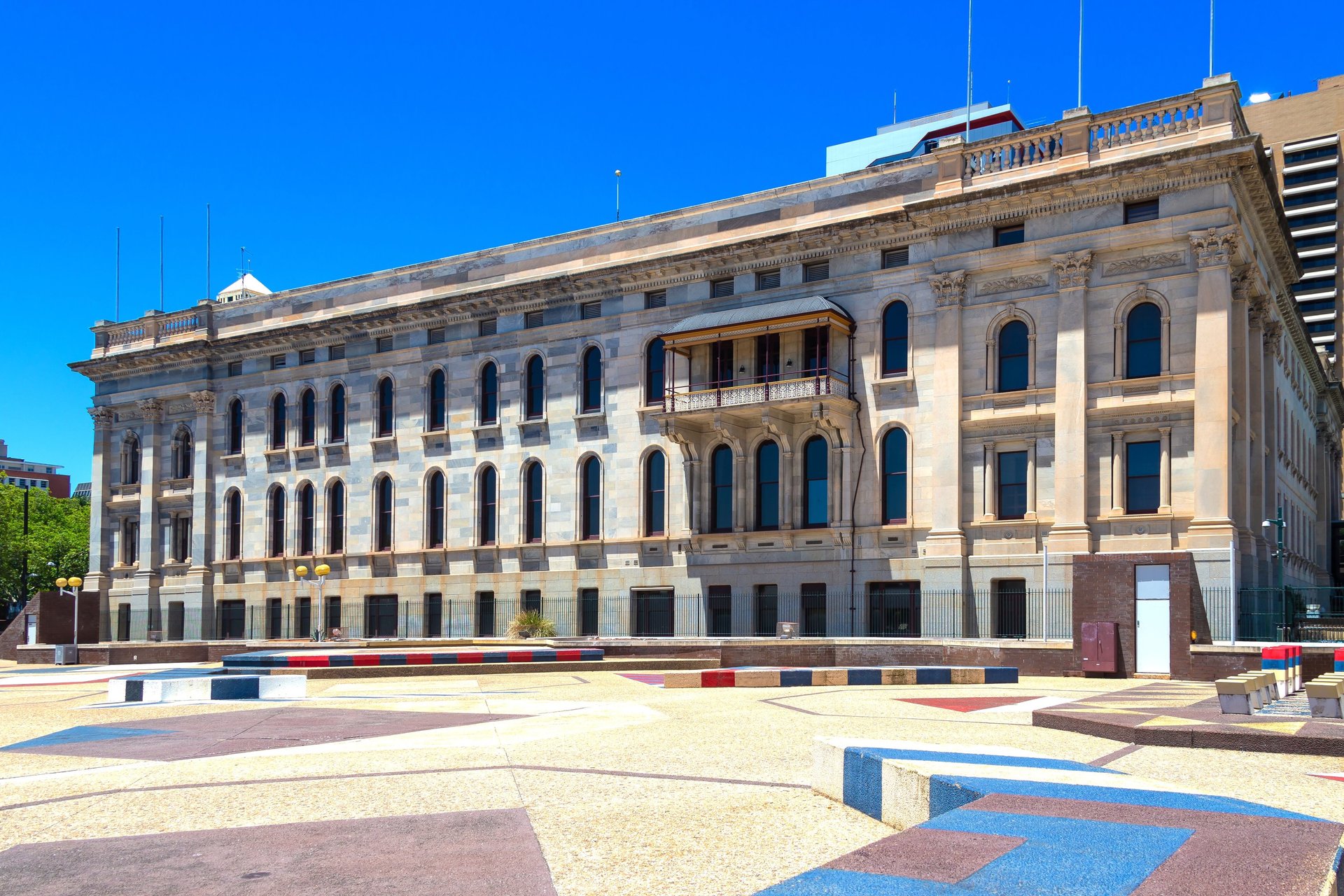
The SA Parliament in 1894 enacted the world's first legislation for women's full democratic rights, and is therefore the site of the first legislation of full democratic rights for all, across gender and racial lines.
It also was the site of the first global legislation of one vote one value and the secret ballot.
A proposed adjacent 38-storey private office tower is being forced on the city against any logic by the State Government. It would loom over the National Heritage-listed Parliament by more than 30 floors and display ignorance of this profound women's achievement.
In contrast to the globally aware and visionary government of 1894, it would represent insular out-of-touch governance, and government acting in undemocratic fashion with community assets of deep cultural significance. It would create an unavoidable sense of backwardness.
Further, given that the goal was for a cutting-edge space like Federation Square in Melbourne, what could possibly be more banal and incongruous than an office building in a cultural precinct that is zoned 'entertainment'?
This is planning of a type that was abandoned in most cities by 1980.
This giant private building in an intensely civic and irreplaceable space would have no civic purpose beyond a single storey of cafes, and would put the Parliament building in permanent deep shade, both physically and metaphorically.
There are rumours from reliable sources that the Premier's office, and his cabinet's, would be in the building.
This would be a major embarrassment for Adelaide- it is unheard of for a city to put a tower in its civic plaza.
The tower must be relocated and the plaza developed as a vibrant cultural and entertainment based civic space- one that could celebrate democracy.
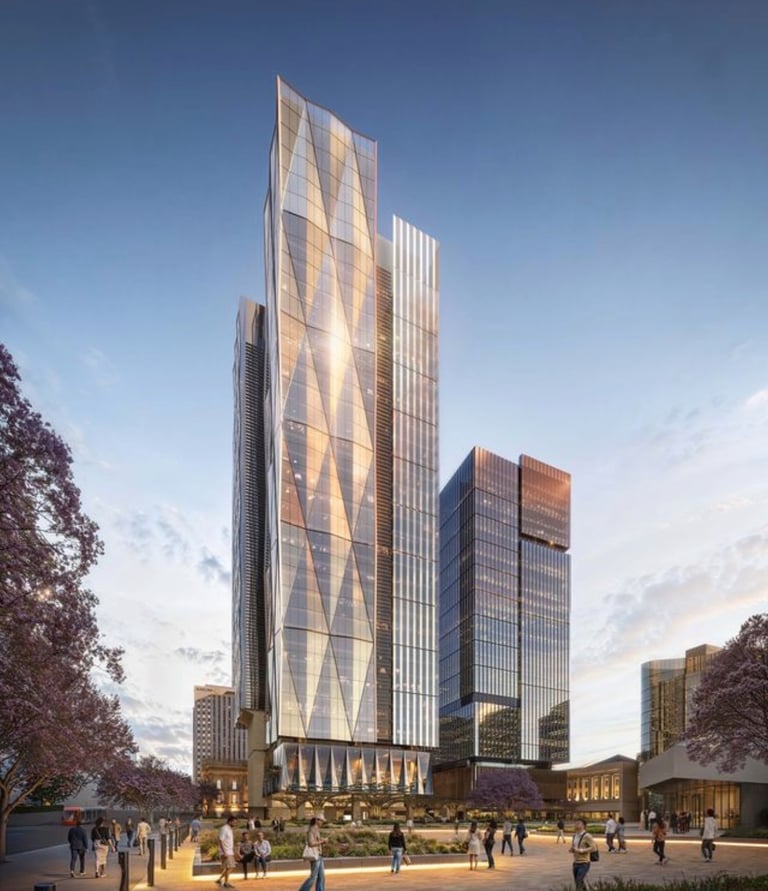

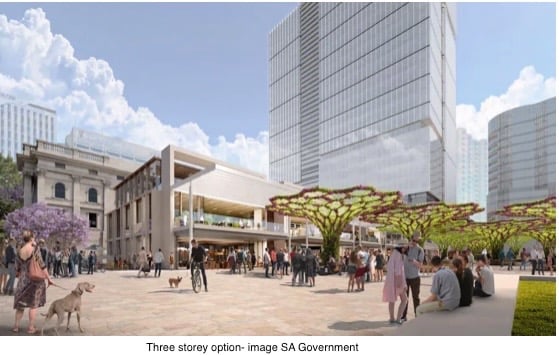

Democracy Plaza
A Civic, and Economic, Anchor
Festival Plaza presents Adelaide with the chance to create a Democracy Plaza- a world-class civic square framed by Parliament House, the Festival Theatre, and Government House. Such a plaza could transform Adelaide’s economy, culture, and global reputation.
Adelaide already markets itself as Australia’s “Festival City.” The Adelaide Fringe generates more than $120 million in gross economic impact annually, drawing over 1 million attendances each year. WOMADelaide contributes an estimated $30–40 million annually and brings a highly international audience. The Adelaide Festival contributes another $62 million in economic activity, and collectively, these festivals sustain thousands of jobs.
Yet despite this global profile, Adelaide lacks a central civic square to serve as the city’s stage- an everyday gathering place that can seamlessly host large-scale civic, cultural, and democratic events, such as COP31.
A Democracy Plaza could fill that gap, amplifying existing strengths:
Tourism uplift: Hosting global events and civic celebrations, such as COP31, in a dedicated square could boost visitor spending by $50–100 million per year, building on Adelaide’s proven cultural economy.
Global profile: By embedding commemorative design celebrating South Australia’s world-first democratic reforms of 1894, the Plaza would project Adelaide internationally as the birthplace of universal suffrage.
The Democracy Plaza option would support lasting economic
stability, amplify Adelaide’s festival economy, enhance the
city’s global standing, and offer the chance for Adelaide to
make a major step-up on the world stage for South
Australia’s bicentenary in 2036.
Source: SA Government
The previously approved 3-storey concept
The 38-storey proposal, alongside the previously built Tower 1
Human-Centric Design
Globally: Streets are being reclaimed for walking, cycling, and civic life (Paris, Bogotá, New York................). This has created economic uplift everywhere.
Globally, the arc is towards people-first, green, and resilient cities.
Adelaide, despite its extraordinary natural assets and cultural heritage, is swimming against the current in key areas: prioritising large commercial builds over civic space, neglecting climate resilience in the city core, and undervaluing consultation.
The paradox: Adelaide has the bones of a “model city” (grid, Park Lands, manageable scale) but is markedly drifting out of step with the most forward-looking planning trends.
Adelaide has a beautiful grid, generous Park Lands, and human scale.
Global best practice is in humanising, greening, and diversifying spaces.
Done right, Adelaide could become a global model of a small sustainable city — comparable to Copenhagen or Wellington.
Why is Adelaide swimming against the tide?
The world has moved on............
Economic Roles of Plazas
Plazas (or civic squares) are far more than open spaces — they can act as economic engines for cities when designed and managed well.
Contributions to a city’s economy:
1️⃣ Boosting Local Businesses
Plazas attract foot traffic, which benefits shops, cafés, and restaurants around their edges.
People linger longer in areas with comfortable public space, increasing spending per visit.
Case studies (e.g. New York’s Times Square pedestrianisation, Melbourne’s Federation Square) show that retail sales rose after plazas were created or upgraded.
2️⃣ Catalysts for Investment and Property Value
Quality plazas raise nearby property values by improving neighbourhood desirability.
Developers and investors see them as anchors for mixed-use precincts.
In Europe and the U.S., studies have shown uplifts of 10–20% in adjacent real estate after major plaza renewals.
3️⃣ Tourism and Cultural Economy
Iconic plazas (e.g. Plaza Mayor in Madrid, Piazza San Marco in Venice, Federation Square in Melbourne) become destinations that draw visitors.
Festivals, concerts, and cultural programming in plazas generate significant tourism revenue.
4️⃣ Platforms for Events and Markets
Plazas can host farmers markets, craft fairs, food festivals, and cultural celebrations.
These create opportunities for small businesses, artisans, and entrepreneurs, diversifying the local economy.
5️⃣ Employment and Creative Industries
Well-activated plazas require management, programming, maintenance, and design — supporting jobs in events, hospitality, retail, and urban services.
Creative performances (buskers, art installations) add to both the cultural and economic vibrancy of the area.
6️⃣ Reducing Costs, Increasing Resilience
By providing free, accessible gathering spaces, plazas reduce the demand for private venues and can enhance public health (more walking, social connection).
They strengthen economic resilience by diversifying income sources (retail + tourism + cultural spending).
📌 Bottom Line
A good plaza is not just an aesthetic amenity — it’s infrastructure for economic vitality.
When plazas are well-designed (comfortable, safe, shaded, flexible) and well-programmed (events, markets, cultural uses), they can:
Drive higher retail turnover,
Anchor new investment,
Support tourism and hospitality, and
Strengthen the identity and competitiveness of a city.
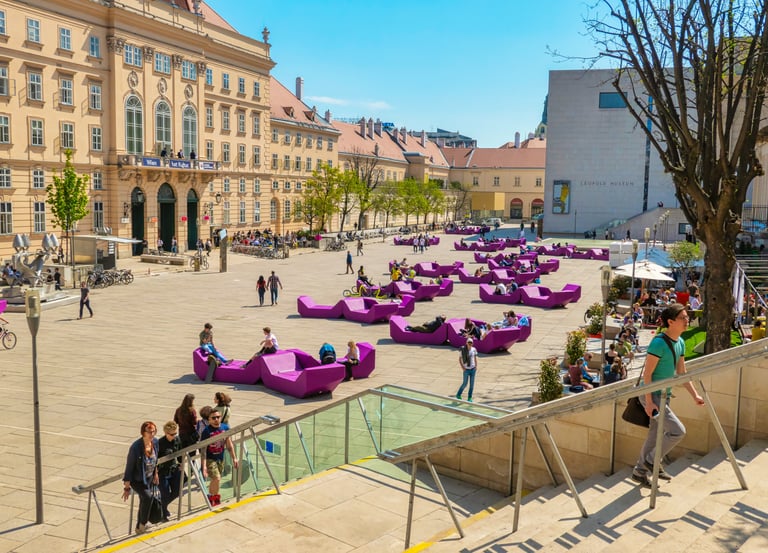

Plazas: Trieste- Vienna- Llubjana- Copenhagen- Milan- Lyons- Prague- Berlin- Copenhagen
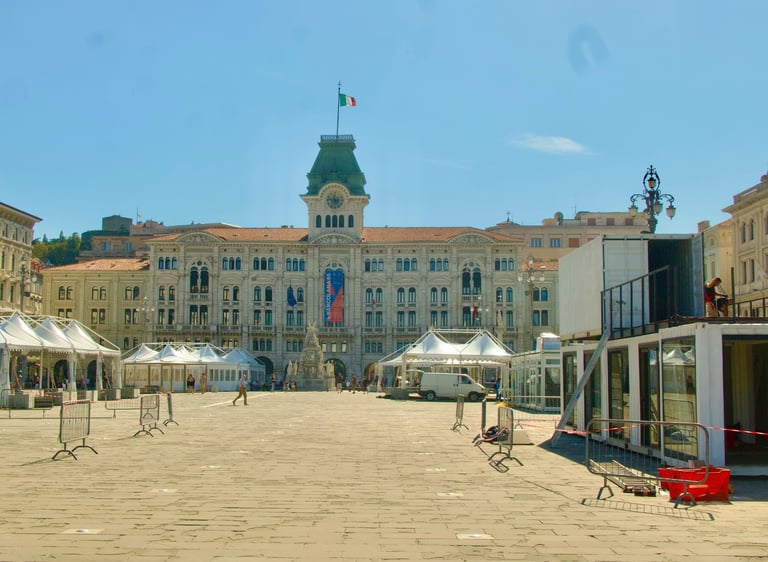

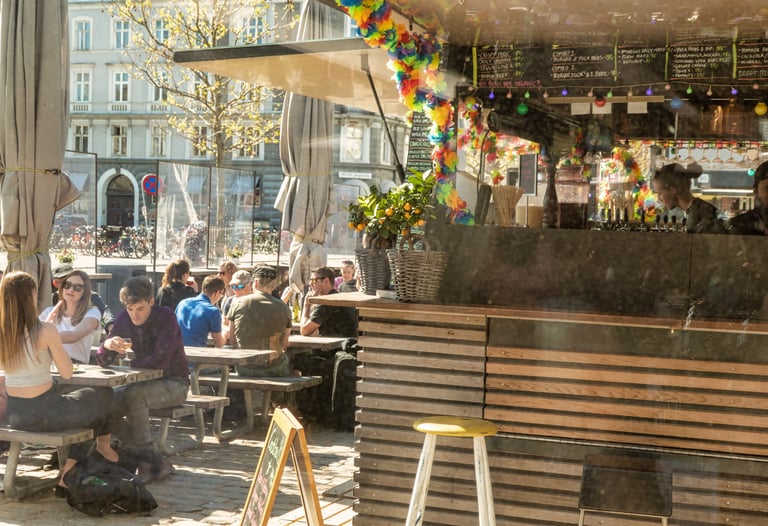


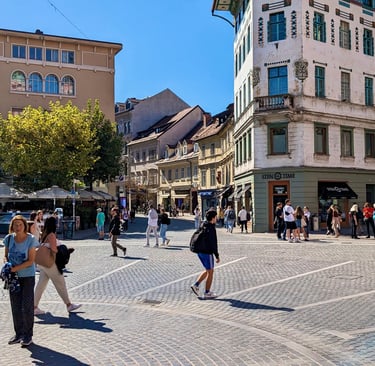
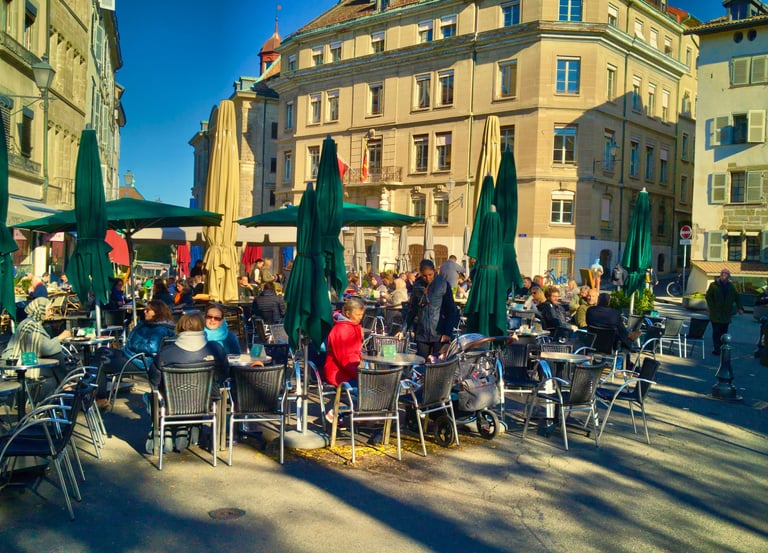

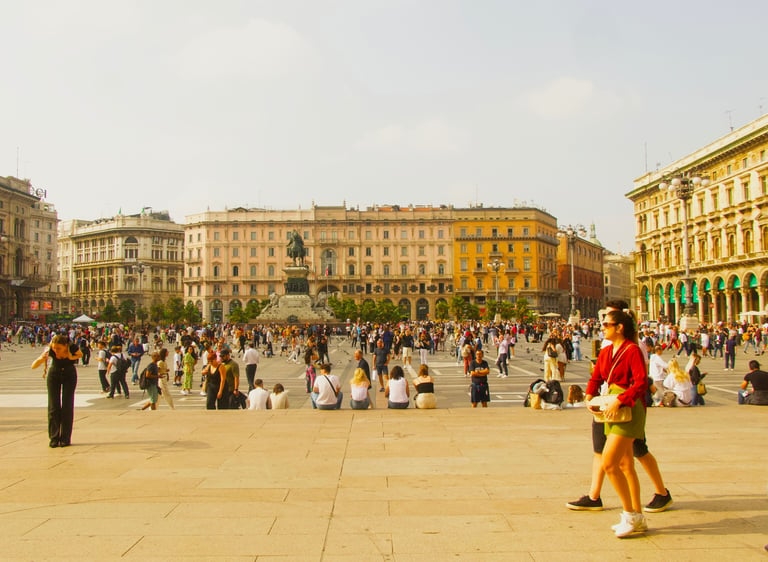

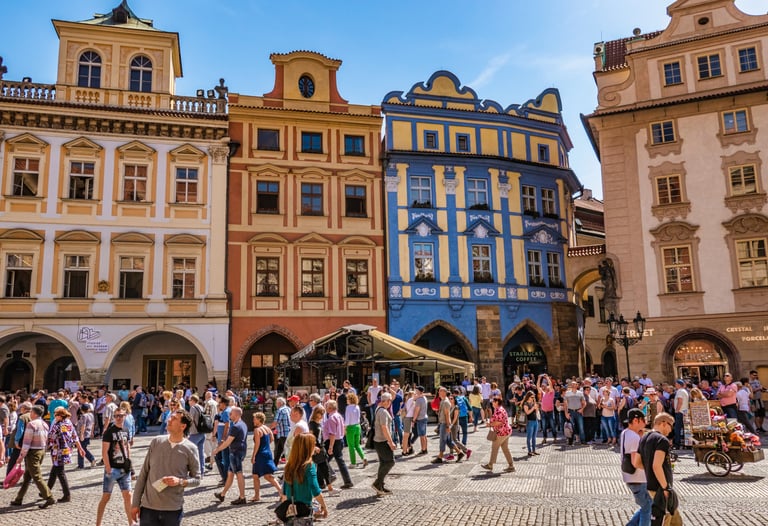

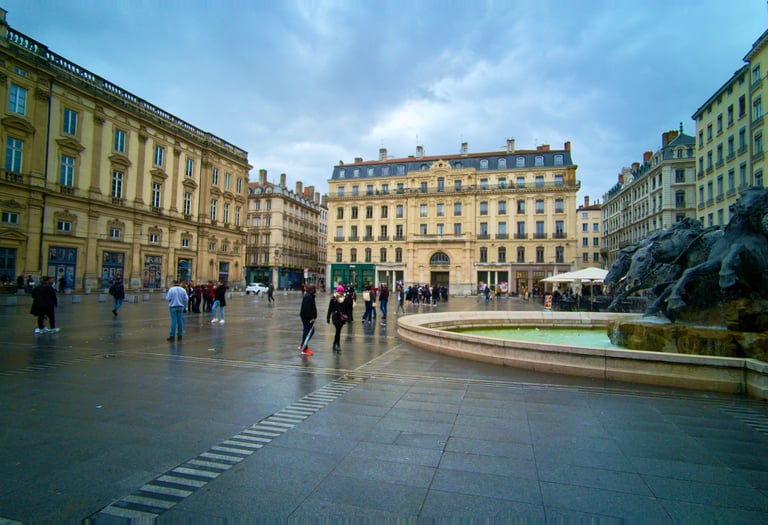

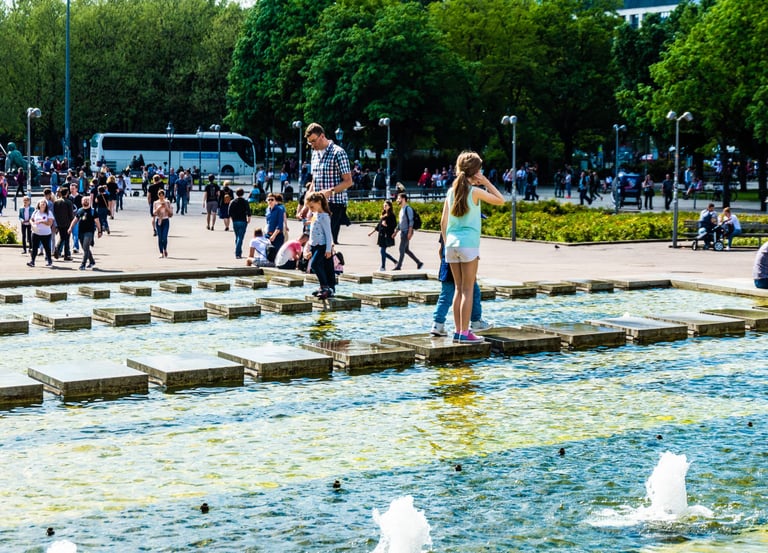

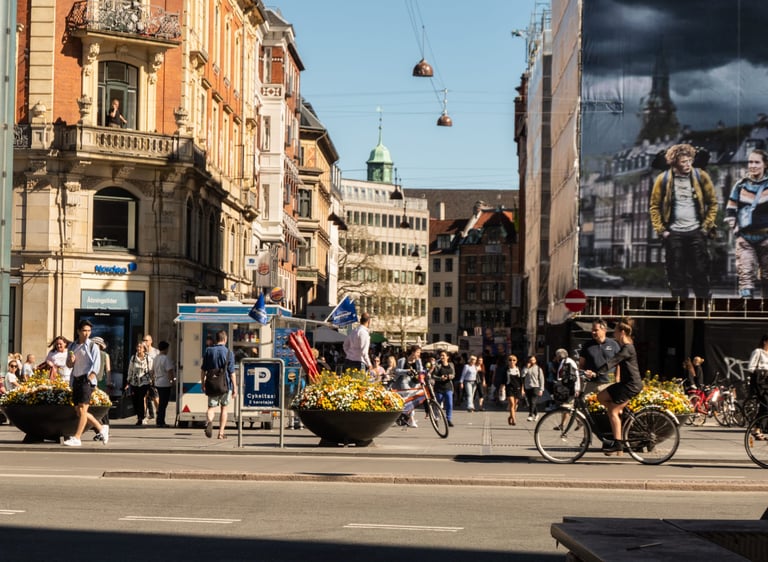

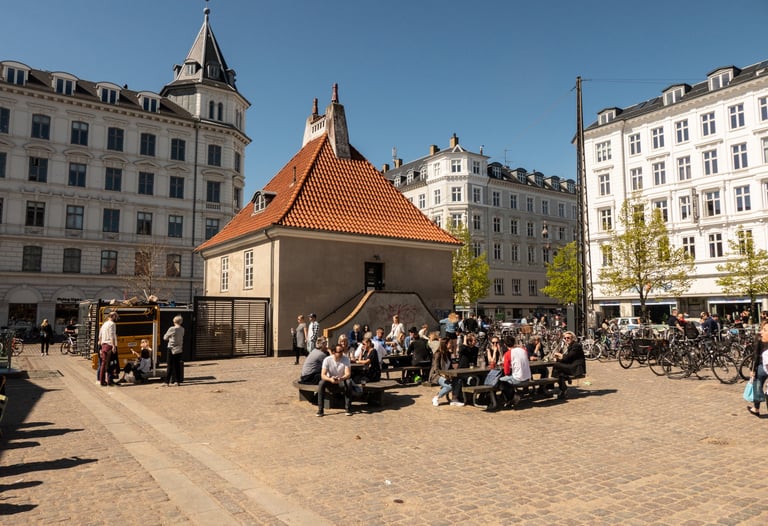

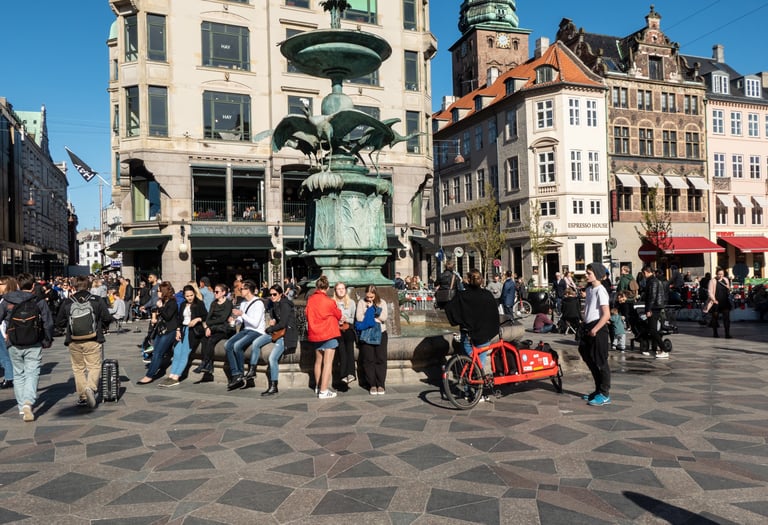

Contact Us
TheTeam@savefestivalplaza.net
Join Us
Save Festival Plaza Alliance
Is a coalition of citizens including planning and architectural professionals and community groups dedicated to revitalizing Adelaide Festival Plaza whilst honoring its historical significance.